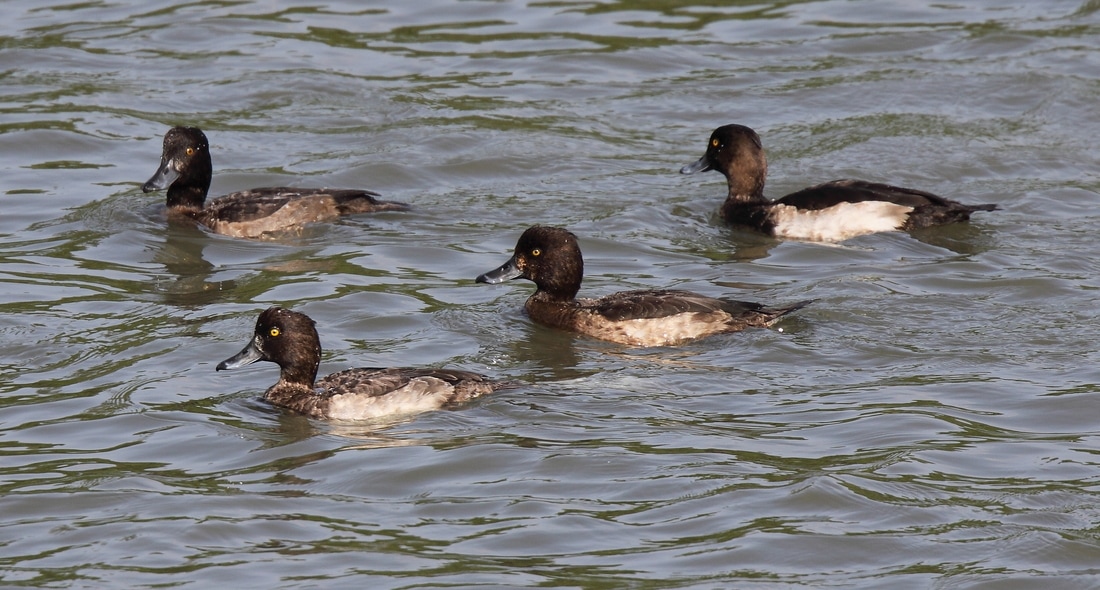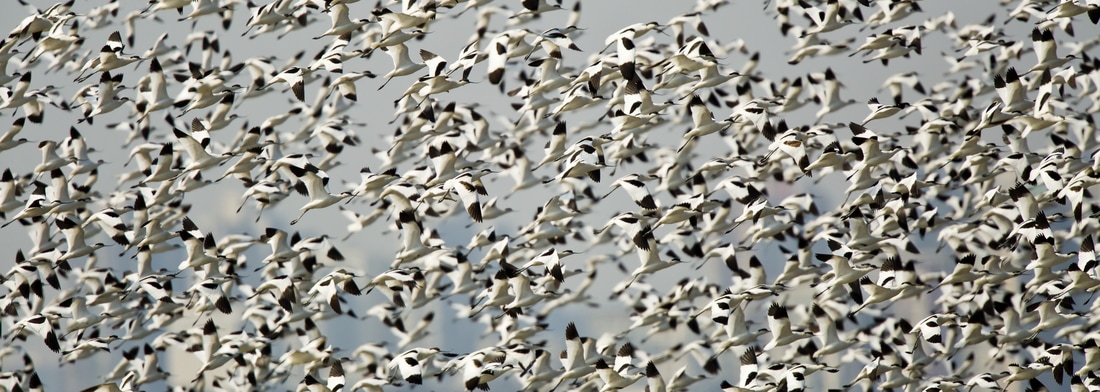|
It’s not all doom and gloom. Counts of some water bird species in Deep Bay have actually increased during the new century, including Great Cormorant, Black-tailed Godwit and Eurasian Curlew. The following three species are, however, the most obvious ones to buck the declining trend. Tufted Duck Aythya fuligula 2015: Peak count 3,204 in March and high count3,053 in December. 1995: Peak count 14 on 5 January and 291 on 31 December. Notes: The highest count on record was 6,742 in February 2009. There was a marked increase from 2005 onwards although numbers have slowly fallen since 2010. Most of the Tufted Ducks winter out on the Shenzhen side of Deep Bay. Comment: The marked increase in counts of this species in Hong Kong contradicts the general catch-all explanation that water birds are wintering further to the north because of global warming (although there was a large increase in numbers of Tufted Duck wintering in South Korea in 2015). The fact that the increase in Tufted Duck numbers occurred at much the same time as the demise of Common Shelduck suggest perhaps more local factors are at play. Again, there is speculation that there may have been a change in food supply out in the bay - to the detriment of Common Shelduck but to the benefit of Tufted Duck. Black-faced Spoonbill Platalea minor 2015: High count 372 in the January WC. Increasing numbers at MPNR from mid-October with peak count 421 roosting there on 12 November. 1995: Numbers increased to 99 on 23 November, a new high, constituting approximately 25% of the world population. Notes: Numbers have increased considerably since the 1990s, in line with an overall increase globally. The highest count was 496 on 24 January 2010. Comment: Currently, the global population is 3,941 (January 2017), so Deep Bay now holds about 10% of the world population. This is a great conservation success story and seems mainly due to the protection of the species in its wintering areas, particularly in Taiwan. Pied Avocet Recurvirostra avosetta 2015:Peak count 10,957 in January. 1995:Peak count 1002 in February, a new high count. Notes: There was a substantial increase up until 2008 - the highest count on record was 16,123 in January 2208 - with a gradual fall since then, but numbers still remain high c.f. the 1990s. Comment: A change in the composition of the food supply out on the mud flats may account for the large increase in numbers during this century. The following statement from the Hong Kong Water Quality Resource Centre (see http://wqrc.epd.gov.hk/en/regional-collaboration/deep-bay.aspx ) may be of relevance here (and to the comments on Common Shelduck and Tufted Duck above): In 2000, the two governments formulated the “Deep Bay (Shenzhen Bay) Water Pollution Control Joint Implementation Programme” (JIP) to improve Deep Bay’s water quality. The JIP sets out pollution control measures to be undertaken by both governments at various stages, essentially to reduce wastewater discharge into Deep Bay by extension and improvement of sewerage infrastructure. Both sides would review the JIP regularly so as to evaluate its effectiveness and to draw up necessary additional mitigation measures, including amendment of the JIP. Both sides are working together in accordance with the revised JIP to reduce progressively the pollution load of Deep Bay. The water quality at major rivers discharging into Deep Bay has continued to improve since mid-2000’s. As a result, the water quality of Deep Bay also shows noticeable improvement. Hong Kong and Shenzhen will work together closely to continue to improve the water quality of Deep Bay. REFERENCES
References to authorities cited in my three-part Blog are as follows: BirdLife International 2017. Species factsheet: Mareca falcata. Downloaded from http://www.birdlife.org on 22/06/2017 China Coastal Waterbird Census Group. 2015. Identification of coastal wetlands of international importance for waterbirds: a review of China Coastal Waterbird Surveys 2005–2013. Avian Research 2015 6:12. Hashimoto, H. and Sugawa, H. 2013. Population Trends of Wintering Eurasian Coot Fulica atra in East Asia. Ornithological Science 12(2):91-105. Mundkur, T., Langendoen, T. and Watkins, D. (eds.) 2017. The Asian Waterbird Census 2008-2015 - results of coordinated counts in Asia and Australasia. Wetlands International, Ede. Reeber, S. 2015. Wildfowl of Europe, Asia and North America. Christopher Helm, London. Shi, H. Q., Cao, L., Baxter, M.A. and Liu, N. F. 2008. Status of the East Asian population of the Dalmatian Pelican Pelecanus crispus: the need for urgent conservation action. Bird Conservation International 18:181–193.
1 Comment
Leave a Reply. |



 RSS Feed
RSS Feed
